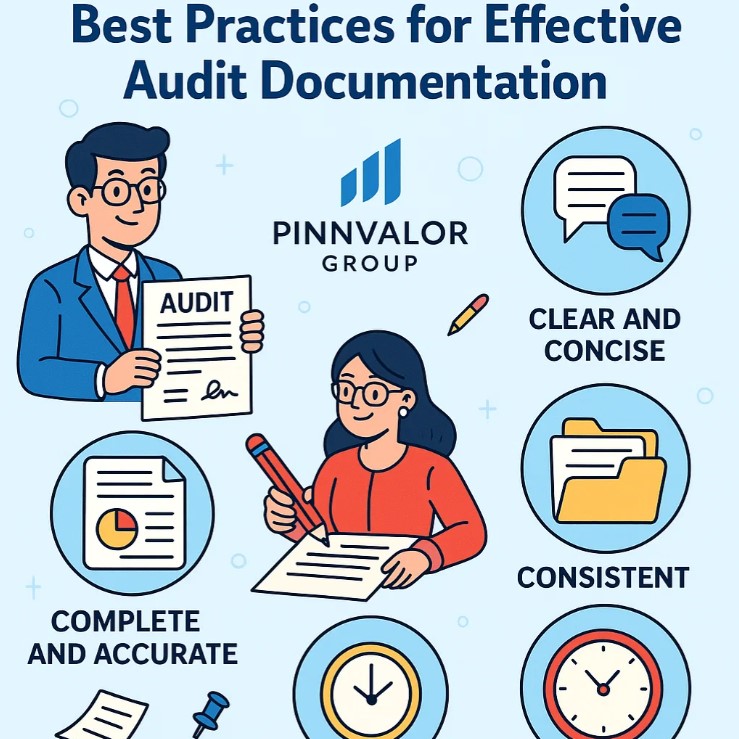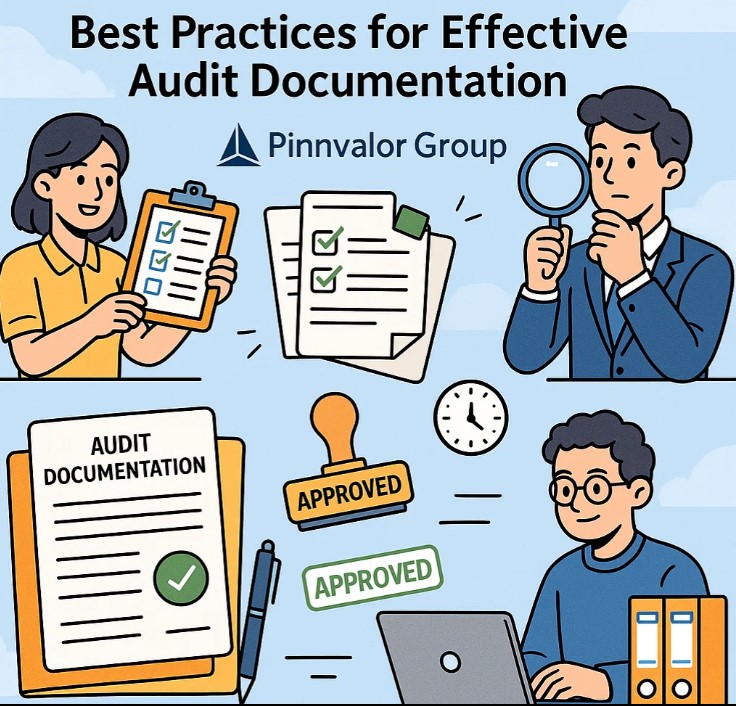
SA 230 Unpacked: Best Practices for Effective Audit Documentation
Audit documentation is the backbone of a quality audit. It not only supports the auditor’s opinion but also provides a clear trail of the audit process, judgment, and evidence. The Standard on Auditing (SA) 230 – Audit Documentation, issued by the ICAI, lays down the framework for the form, content, and retention of documentation in an audit of financial statements.
Would another auditor understand your judgment — or get lost in the paperwork?
Good audit files speak for themselves — clear, complete, and review-ready.
Let’s explore SA 230 in detail, along with the best practices to ensure compliance and enhance audit quality.
🔍 Understanding SA 230: An Overview
SA 230 defines audit documentation as the record of audit procedures performed, relevant audit evidence obtained, and conclusions reached. It helps:
- Support the auditor’s report.
- Enable proper supervision and review.
- Provide a basis for quality control and peer reviews.
- Demonstrate compliance with the Standards on Auditing (SAs).
📌 Key Objectives of SA 230
SA 230 aims to ensure that the audit documentation:
- Provides a sufficient and appropriate record of the basis for the auditor’s report.
- Demonstrates that the audit was planned and performed in accordance with the applicable standards and legal requirements.
🗂️ What Should Be Documented?
The documentation should include, but not be limited to:
- Nature, timing, and extent of audit procedures performed.
- Results of the audit procedures and the audit evidence obtained.
- Significant matters arising during the audit and conclusions reached.
- Audit judgments and reasoning, especially in complex or subjective areas.
📄 Form, Content, and Extent of Audit Documentation
SA 230 does not prescribe a fixed format. However, the documentation should be:
- Complete and clear enough for another experienced auditor to understand the audit work performed and conclusions drawn.
- Timely – documentation should be completed on a timely basis, ideally within 60 days of the audit report date.
- Properly organized, including indexing, cross-referencing, and version control for ease of review.
🔒 Retention and Confidentiality
- Retention Period: Audit documentation should be retained for at least 7 years from the date of the auditor’s report.
- Confidentiality: While audit files are confidential, they may be subject to inspection by regulatory authorities, quality review boards, or in legal proceedings.

✅ Best Practices for Effective Audit Documentation
Here are the top audit documentation best practices aligned with SA 230:
- Document While You Work: Avoid documenting audit procedures retrospectively. Real-time documentation ensures accuracy and detail.
- Be Clear, Concise, and Complete: Ensure your documentation is detailed enough for another auditor to replicate or understand the steps and reasoning.
- Highlight Key Judgments: Clearly document areas involving significant judgment or estimates, such as valuation models, impairment reviews, or revenue recognition.
- Use Standard Templates and Checklists: Use standardized formats for working papers to maintain consistency, especially for recurring audit areas.
- Maintain Proper Indexing and Referencing: Cross-reference working papers to audit procedures and client documents for seamless navigation during review.
- Protect Confidentiality: Store documentation in secure digital platforms with controlled access and back-up systems.
- Stay Aligned with Technology: Leverage audit tools and software for better documentation, version control, and audit trail maintenance.
🚫 Common Pitfalls to Avoid
- Over-reliance on client-prepared documents without adequate auditor analysis.
- Lack of documentation for significant risks or auditor’s rationale for conclusions.
- Post-dated working papers added without proper justification or dating.
- Vague or boilerplate narratives with little relevance to the specific client.
🧩 Final Thoughts
Effective audit documentation is not just about compliance — it’s about building transparency, accountability, and audit quality. By following the principles of SA 230, auditors can strengthen their practices, provide better client service, and stand audit scrutiny confidently.
